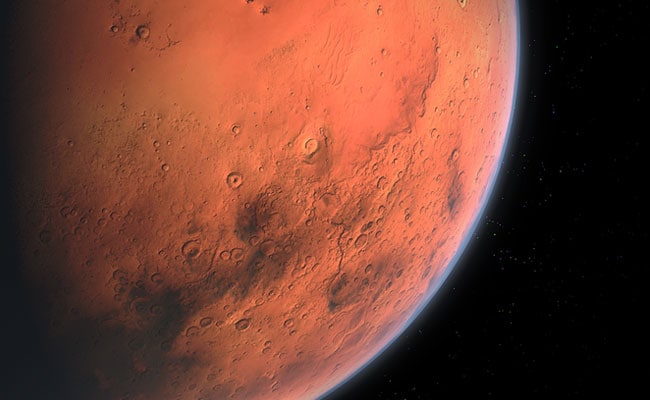The Chinese spacecraft Zhurong Mars will land on the Red Planet in 2021.
The Chinese robotic rover entirely on Mars has found, for the first time, traces of recent water activity on the Red Planet, indicating that Mars has few regions where conditions are suitable for the existence of life. According to a research paper published in the journal Science advancesThe Zhurong rover, which landed on Mars in 2021, detected evidence of liquid water on sand dunes at low latitudes, that is, towards the equator and away from its poles.
In their study, the Chinese researchers note that scientists have long believed that Mars had an Earth-like climate and ocean coursing across its surface about three billion years ago. But the dramatic climate changes froze so much that scientists think most of it is likely trapped in the planet’s outer layer, or crust. To date, no evidence has been presented to show the existence of liquid water at low latitudes on the Red Planet.
However, the latest research is now believed to represent a major advance in understanding the evolutionary history of Mars.
Scientists studying data from China’s Zuurong rover noted that the rover did not directly detect any water in the form of frost or ice, but rather rich salt dunes with cracks and crusts. The study said that the rover found crack layers on small Martian dunes for the first time, indicating that the Red Planet was a watery world rich in salt 400,000 years ago.
Read also | Canadian actor’s death from surgeries to look like Jimin from BTS was an AI hoax: report
The Chinese researchers explained that because temperatures on Mars fluctuated wildly and soared in the morning, salt water evaporated and left behind newly formed salt and other minerals that later seeped between grains of sand in the dunes, solidifying to form a crust.
“This is important for understanding the evolutionary history of the Martian climate, searching for a habitable environment, and providing key clues for the future search for life,” said lead researcher Chen Xiaoguang of the Chinese Academy of Sciences (CAS).
The team reported that they used data obtained by the Robotic Navigation and Terrain Camera, the Multispectral Camera, and the Mars Surface Composition Detector. They found that the surface layer of the sand dunes was rich in hydrated sulfates, hydrated silica, iron oxides and possibly chlorides.
“According to the meteorological data measured by Zhurong and other Mars astronauts, we concluded that these dune surface properties are related to the involvement of liquid brine formed from subsequent melting of frost/snow falling on the salt-containing dune surfaces when cooling occurs,” said Chen.

“Typical beer advocate. Future teen idol. Unapologetic tv practitioner. Music trailblazer.”






More Stories
Has the James Webb Space Telescope really discovered extraterrestrial life? Scientists aren’t so sure about that
Rocket Report: Astroscale chases a dead rocket; Ariane 6 on the podium
Astronomers solve the mystery of the dramatic 1936 explosion of FU Orionis